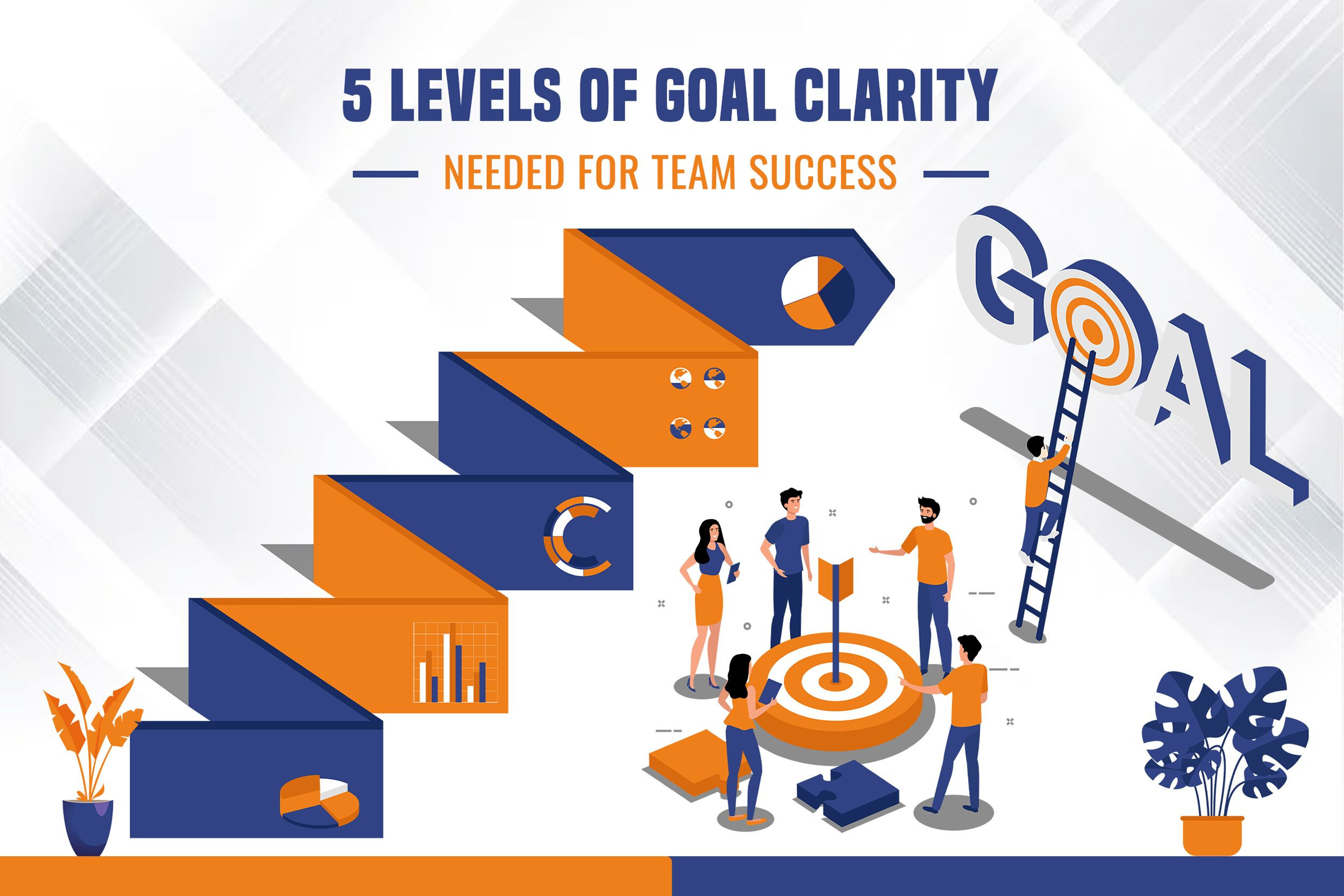
5 Levels Of Goal Clarity Needed For Team Success
Setting clear and achievable goals is crucial for the success of any team. However, simply having goals is not enough. To truly drive success, teams need to have a deep level of goal clarity. Goal clarity refers to the extent to which team members understand the goals, objectives, and desired outcomes of their work. In this article, we will explore the 5 levels of goal clarity needed for team success and how they contribute to the overall effectiveness and productivity of a team.
5 Levels Of Goal Clarity For The Success of Team
Level 1: Shared Vision and Purpose
At the foundational level of goal clarity, teams must establish a shared vision and purpose. This involves defining a common goal or objective that inspires and motivates team members. The shared vision provides a sense of direction and creates a unifying bond among team members, encouraging collaboration and cooperation.
To foster a shared vision and purpose, team leaders can facilitate open discussions, brainstorming sessions, or team-building activities. By involving team members in the goal-setting process, they feel a sense of ownership and commitment toward achieving the shared vision.
Level 2: Clear and Specific Goals
At the second level of goal clarity, it is crucial to set clear and specific goals once the shared vision has been established. These goals should be well-defined, allowing team members to understand precisely what needs to be accomplished and how success will be measured. To achieve clarity at this level, team leaders can utilize the SMART framework—Specific, Measurable, Achievable, Relevant, and Time-bound.
This framework ensures that goals are not only clear but also tangible and actionable. By incorporating the SMART criteria into goal-setting, team members gain a stronger sense of focus and motivation, as they have a clear roadmap to follow. Consequently, the team becomes more efficient in pursuing its objectives within the defined timeframe. Also, Transformational Leadership Training Program for employees helps them focus on the company objectives.
Level 3: Individual Role Alignment
At the third level of goal clarity, individual role alignment emerges as a critical factor for team success. Team members must grasp the significance of their individual roles and responsibilities in relation to the overall team goals. It is essential for each team member to have a clear understanding of their specific tasks, deliverables, and how their contributions fit into the bigger picture of the team's objectives.
To achieve goal clarity at this level, regular communication and feedback are paramount. Team leaders should foster an environment of open communication, providing ongoing support and guidance in the form of Leadership Training Programs For Employees. By clarifying expectations and ensuring that team members have the necessary resources to fulfill their roles effectively, leaders enable individuals to align their efforts with the team's collective goals. This alignment not only enhances coordination and collaboration within the team but also boosts motivation and accountability. As a result, the team functions cohesively, maximizing its potential for success.
Level 4: Interdependencies and Collaboration
In the realm of goal clarity, the fourth level emphasizes the recognition of interdependencies and the cultivation of collaboration among team members. It is crucial for team members to comprehend how their individual tasks and contributions are interconnected with and influence the work of others.
To foster goal clarity at this level, an environment that promotes open communication, knowledge sharing, and teamwork is imperative. Team leaders play a vital role in encouraging collaboration by organizing regular team meetings where ideas and insights can be shared freely. Engaging in cross-functional projects allows team members to appreciate the interconnectedness of their efforts and facilitates a holistic approach to achieving goals. Additionally, team-building exercises and Leadership Training Programs For Employees can be employed to enhance cooperation, trust, and mutual understanding among team members.
By prioritizing interdependencies and fostering a collaborative atmosphere, teams can leverage the collective skills and knowledge of their members, resulting in increased synergy and innovation. Ultimately, this level of goal clarity facilitates effective coordination, maximizes efficiency, and drives the team toward success.
Level 5: Performance Measurement and Feedback
The fifth and final level of goal clarity revolves around performance measurement and feedback. It is crucial for team members to receive regular feedback regarding their progress toward the established goals. Be it the team’s performance in the Transformational Leadership Training Program or the work assignments and projects, this feedback serves as a compass, helping them stay on track, make necessary adjustments, and celebrate achievements along the way.
Performance measurement can take various forms, including regular performance reviews, progress reports, or the use of key performance indicators (KPIs). By implementing these measurement techniques, team leaders can assess individual and team performance objectively, enabling them to identify areas of improvement and recognize areas of success.
In addition to providing constructive feedback, effective leaders also acknowledge and celebrate both individual and team accomplishments. By acknowledging the hard work and dedication exhibited by team members, leaders foster a positive and motivating environment that fuels further success. Furthermore, leaders should promptly address any performance gaps by offering guidance, support, and resources to help team members overcome challenges and excel in their roles.
By emphasizing performance measurement and feedback, teams can continuously monitor their progress, make necessary course corrections, and drive continuous improvement. This level of goal clarity promotes accountability, encourages growth, and ultimately propels the team toward sustained success.
Final Words
Achieving goal clarity is a critical factor in driving team success. By establishing a shared vision, setting clear and specific goals, aligning individual roles, promoting collaboration, and providing feedback, teams can enhance their effectiveness and productivity. Goal clarity provides a roadmap for team members, enabling them to work together towards a common purpose. Remember, goal clarity is not a one-time effort but an ongoing process that requires continuous communication, adaptation, and alignment.
